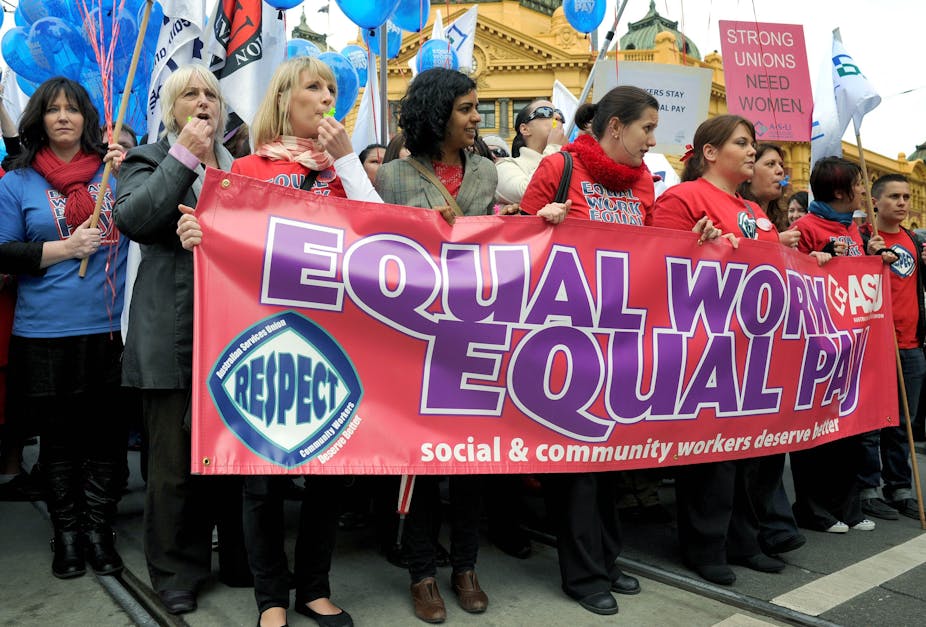Last week’s Equal Pay Day highlighted the fact that despite decades of supposed reform, women’s average full-time weekly earnings remains 17.2% below men.
Is this obvious to our employers? Worryingly, it appears not.
According to Helen Conway, Director of the Equal Opportunity in the Workplace Agency (EOWA) there is “clear evidence” many employers do not understand what pay equity means.
To understand the problem of pay equity and investigate it, employers can use a pay equity audit to identify inequities and remove barriers to women’s workforce participation and career progression.
But little of this appears to be happening in Australian workplaces.
A 2010 EOWA survey results reports that while a significant number of organisations reveal a gender pay gap in their workplaces, less than 40% conduct an annual pay equity analysis.
Further, EOWA reports that only half of organisations that do conduct some analysis had actually developed an action plan to address the gap.
“They are effectively in denial about any gender pay gap which exists in their organisations,” Conway says.
Yet the means to encourage employers to investigate possible sources of gender pay gaps are easily available through EOWA initiatives such as the Mind the Gap, an online pay equity course which helps them review and report on gender pay equity progress.
Assistance, business cases, and comparative research and statistics are easily available through EOWA, which is also leading the development of an Australian Standard on Gender-inclusive Job Evaluation and Grading.
So given that we are moving in the right direction of making available resources and evidence-based justification for Equal Pay, why don’t more organisations undertake a remuneration analysis and redress the gender pay gap?
Can we reach a position in our economic consciousness where different work patterns for men and women are accommodated flexibly and without prejudice?
It seems the legislative route to redressing the gender pay gap is alive, but struggling.
According to Conway, the three legal options available for Australian women to achieve pay equality - equal remuneration applications, sex discrimination claims and adverse action claims have proved to be very difficult avenues for pursuing pay equity.
“The cases are complex for all participants. There are few cases and there is not yet a substantial body of expertise for developing and running them. The costs and time involved can be substantial,” she says.
“… In view of the prevalence and scale of pay equity problems that need addressing, processing them all through the legal system would be putting a long cavalcade of camels through the eye of a very small needle.”
With the consolation that 2009’s Fair Work Act and its first test case in the social and community workers case will serve as a guiding benchmark for other sectors and organisations, it still begs the question: what hope do women have for pay equity when it can be addressed only by the hand of the law?
Although Conway suggests a wide range of other solutions - such as collective enterprise bargaining and changes in HR and management practices - it is clear that it is not the means that is lacking, but the willpower to change and acknowledge the value of women in the workplace.
More measures will inevitably deliver visible change, but the core values which support this entrenched bias towards women might remain unaffected.
What is needed for sustainable change is more than workplace measures. Tackling notions of gender inequality in the consciousness of Australian society through education and developing critical thinking in children, youth and adults to question gender-based discrimination which must also be pursued alongside workplace and government measures.
For organisational policies to become positive policies, they must support the well-being of men and women, equally.
As it is evident that individual well-being impacts on organisational well-being and productivity, there is a clear business case to value women and to demonstrate this through equitable policies and practices.

